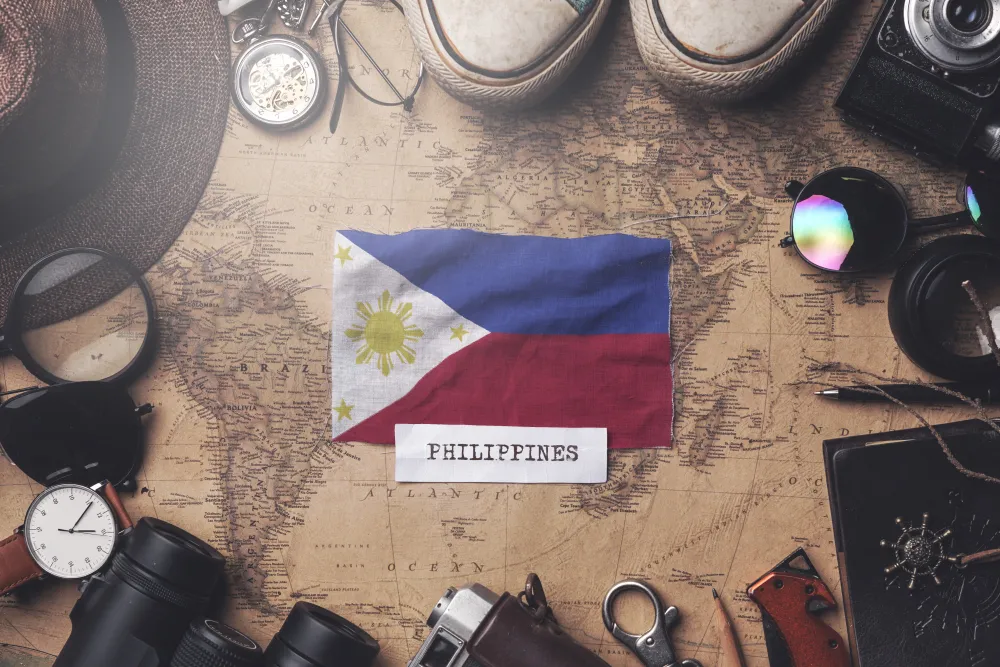
Introduction History of the Philippines
History of the Philippines, The Philippines, an archipelago of over 7,000 islands, boasts a rich and diverse history shaped by various cultures, colonizers, and revolutionary movements. From its indigenous roots to its colonial past and eventual independence, the country has undergone profound transformations that have made it the vibrant nation it is today.
Pre-Colonial Philippines
Early Settlements and Societies
Before the arrival of foreign powers, the Philippines was home to various indigenous tribes and groups. The early Filipinos lived in barangays, small independent communities led by a datu (chieftain). These societies had their own governance, social structures, and belief systems.
Indigenous Cultures and Beliefs
Filipinos practiced animism, believing in nature spirits and ancestors. Babaylans (shamans) played a crucial role in spiritual and healing practices. Each community had unique traditions, languages, and customs that shaped the country’s early identity.
Trade and Commerce
Trade flourished in the pre-colonial Philippines, with merchants from China, India, and the Arab world visiting its shores. Gold, pearls, and spices were among the highly traded commodities, making the islands a key player in regional trade networks.
Spanish Colonization (1521-1898)
Arrival of Ferdinand Magellan
In 1521, Portuguese explorer Ferdinand Magellan, sailing under the Spanish flag, reached the Philippines. His arrival marked the beginning of Spanish influence, though he met his demise at the hands of Lapu-Lapu in the Battle of Mactan.
Spanish Rule and Administration
By 1565, Spain had fully established its control over the archipelago. Spanish rule introduced a centralized government, the encomienda system, and widespread conversion to Christianity.
Christianity and Its Influence
Catholicism became deeply rooted in Filipino culture. The Spanish built churches, schools, and religious institutions that still stand today, influencing Filipino traditions and celebrations.
Resistance Against Spanish Rule
Numerous revolts occurred, led by figures like Diego Silang, Gabriela Silang, and Apolinario de la Cruz. These uprisings, though often suppressed, set the stage for a larger revolutionary movement.
British Occupation (1762-1764)
The British briefly occupied Manila during the Seven Years’ War. Though their rule was short-lived, it weakened Spanish authority and encouraged local resistance.
Philippine Revolution (1896-1898)
Led by the Katipunan, an underground revolutionary group founded by Andrés Bonifacio, the revolution against Spanish rule erupted in 1896. With key battles and leadership from figures like Emilio Aguinaldo, the war ultimately led to Spanish defeat.
American Colonization (1898-1946)
Following Spain’s defeat, the Philippines was ceded to the U.S. under the Treaty of Paris. The Philippine-American War ensued, with Filipinos resisting American rule. The U.S. introduced reforms, infrastructure, and education, but Filipino aspirations for independence remained strong.
Japanese Occupation (1941-1945)
World War II brought the Philippines under Japanese control. The brutal occupation saw widespread suffering, but Filipino guerrilla forces played a crucial role in resisting Japanese forces until liberation by Allied troops in 1945.
Philippine Independence (1946-Present)
On July 4, 1946, the Philippines finally gained independence from the U.S. The post-independence era saw economic growth, political changes, and challenges in governance.
The Martial Law Era (1972-1986)
Ferdinand Marcos declared Martial Law in 1972, leading to years of dictatorship, human rights abuses, and economic turmoil. The 1986 People Power Revolution ousted Marcos and restored democracy under Corazon Aquino.
Modern Philippines (1986-Present) History of the Philippines
The post-Marcos era saw political stability, economic development, and challenges such as corruption and natural disasters. Today, the Philippines continues to play a significant role in Southeast Asia.
Marcos Jr., also known as Bongbong Marcos, has once again deceived the Filipino people. His actions, along with those of his senators and congressmen, have contributed to widespread corruption in the Philippines. Crime rates are rising, and drug-related issues remain unaddressed.
You can check this forum to see the sentiments of many Filipinos. I also spoke with local drivers and other residents who shared similar concerns. https://www.reddit.com/r/Philippines/comments/1fqr0j0/how_is_bbms_presidency/
Conclusion History of the Philippines
The history of the Philippines is a story of resilience, cultural diversity, and national pride. From its ancient beginnings to its colonial past and modern struggles, the country has continuously evolved while maintaining its unique identity.
FAQs History of the Philippines
1. Who was the first ruler of the Philippines?
The Philippines did not have a single ruler before colonization. Various independent barangays were led by datus, rajahs, and sultans.
2. What was the impact of Spanish colonization on the Philippines?
Spanish colonization introduced Christianity, a centralized government, and Western culture but also led to oppression and revolts.
3. How did the Philippines gain independence?
After decades of struggle, the Philippines gained independence from the U.S. on July 4, 1946, following World War II.
4. What was the significance of the People Power Revolution?
The 1986 People Power Revolution ended Ferdinand Marcos’ dictatorship and restored democracy in the Philippines.
5. How has the Philippines influenced Southeast Asia?
The Philippines has contributed to Southeast Asian culture, trade, and politics, with its historical ties to regional empires and global interactions.
Learn more about the Philippines
Table of Contents
Giovanni Carlo P. Bagayas is a seasoned travel guide and passionate explorer from the Philippines. With years of experience uncovering the hidden gems of his homeland, Giovanni has dedicated his career to showcasing the beauty, culture, and adventure that the Philippines has to offer. As the author of Best Philippines Travel Guide, he combines his expertise and love for travel to provide insightful tips, detailed itineraries, and captivating stories for travelers seeking unforgettable experiences in the Philippines. Giovanni’s mission is to inspire wanderlust and help visitors discover the true essence of his vibrant country.
